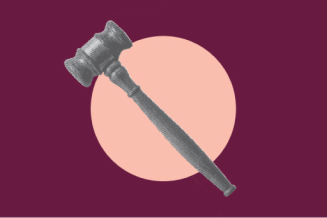
At a panel in Toronto recently I was asked whether I thought the United States had become a “surveillance state.” How to answer that question? At first glance it’s an impossibly fuzzy question, the answer to which is relative depending on whether one has in mind life in an 18th century American town, or the Stasi. At the same time, if we can impose some structure on how we approach the question, it is an opportunity to take stock of where we stand—probably a healthy exercise.
Thinking it over, I came up with a five-part test by which we can consider the question:
- Capacity. To what extent have we reached the point where we are technologically capable of building a total surveillance society?
- Infrastructure. To what extent have technological capacities actually been utilized to build infrastructures for mass surveillance?
- Activation. To what extent are those surveillance infrastructures actually being used to collect, store and analyze people’s data?
- Enforcement. To what extent is that surveillance actually being used by the government to enforce societal laws, rules, regulations, and norms?
- Authoritarian abuse. To what extent is that surveillance being done in an undemocratic manner and/or being abused to maintain power and stifle dissent and other fundamental rights?
We can imagine a sliding scale for each factor, with the low end being the state of the art in, say, colonial America, and the high end being the ultimate imaginable surveillance society—a dystopian combination of Orwell, the Stasi, and the USSR. Some thoughts on where we stand on each measure:
1. Technological Capacity
On this dimension, it’s fair to say we have arrived. As a technological matter, there is nothing stopping us from building the most total surveillance society in which everyone’s movements, communications, and activities are tracked in their entirety. That’s not to say that many more “innovations” making it easier and cheaper to carry out surveillance aren’t going to be coming down the pike. But overall, we are there.
To a great extent our newfound capacity for total surveillance is a side effect of the amazing technological advances that have brought us so many benefits in other areas. That larger progress is a good thing. At the same time, it is also, to some extent at least, the result of directed investment in surveillance technologies—which we have seen in many areas such as biometrics. Those “advances” in capacity reflect not the larger revolution in technology but the interest of our security state in expanding surveillance to the maximum possible extent.
2. The building of infrastructure
Significant infrastructures for the mass surveillance of the population are now in existence, including perhaps most significantly the cell phone network, the internet advertising system, and the NSA’s spying apparatus. As with our technological capacity, some of these actual surveillance infrastructures, such as the cell phone network, are accidental—though no less powerful for it—while others have been created specifically for the purpose of surveillance.
At the same time, there are many other infrastructures for mass surveillance that could be built today, but have not been so far. These range from the increasingly real (a nationwide network of license scanners) to the apparently approaching (wide-area drone surveillance, networks of WiFi or RFID readers) to the threatening (smart roads, the widespread addition of microphones to surveillance cameras) to the technologically doable but politically unimaginable (such as a network of government cameras in every bedroom).
The bottom line is while we have the technological capacity to do much more surveillance than we are actually doing today, we are already living in the shadow of some far-reaching surveillance infrastructures that previous generations of Americans would have been stunned to learn of.
3. Activation for collecting and analyzing
Just because a surveillance infrastructure exists does not necessarily mean that it is being used, or used to its maximum capability. Data could flow through government hands without being stored or examined, or it could be stored without being analyzed. Or, on the other hand, the authorities could leave no bit behind, storing and analyzing everything.
The cell phone network and the legal regime that governs it, for example, could theoretically provide the authorities with a constant stream of location data about all citizens at a much greater level of detail than that which is now generally retained (a scenario that might look like this). On the other end of the spectrum, though the operation of the technology requires that cell towers be aware of one’s location at any moment, it would be entirely possible to structure the system so that it doesn’t retain any of that location data. Or we could create a legal regime that at least prevents location data from flowing to the authorities without a warrant.
Similarly, although the NSA has constructed an enormous infrastructure for the mass collection of communications data, the boundaries of actual collection, storage, and analysis of those communications—while clearly far, far broader than is justified—appear to be highly variable depending on factors such as content vs. metadata, type of content, source of data, and whether the communicating parties are Americans or non-Americans.
With each of the three biggest surveillance infrastructures that now exist (the phone network, the internet advertising machine, and the NSA), the extent to which the systems’ capabilities are actually being exploited is currently the subject of raucous debate and controversy. Of course, even if some degree of “surveillance capacity” is lying unused with these infrastructures, it would be foolish to think that agencies won’t over time push to exploit them to the fullest.
4. Using for enforcement
It is theoretically possible that government agencies and companies could carry out huge amounts of surveillance on Americans, but not act on any of it. On the other extreme, it’s also possible that it could be used to rigorously—in fact absolutely—enforce all existing legitimately democratically enacted laws and rules. Such absolute enforcement (as I argued here) would bring many problems and injustices. There are an enormous number of laws on the books, many of which are susceptible to broad discretion by the authorities, so the use of mass surveillance to enforce even only legitimately democratically enacted laws would insert the government into Americans’ lives in an extraordinarily pervasive manner.
Where are we on this scale? Today our spy agencies justify their surveillance in terms of stopping terrorism and other global geo-political interests, but in August, Reuters revealed that intelligence information was being secretly funneled to authorities across the nation to help them launch criminal investigations. We don’t know exactly what’s involved, but this has the feel of a slope that is potentially very slippery indeed.
Domestic law enforcement, of course, makes aggressive use of all the surveillance vectors available to it (everything from internet and cell phone surveillance systems to such things as toll booth records) to enforce those laws that it chooses to enforce.
5. Authoritarian abuse
The concept of a “surveillance society” is tightly bound up with totalitarian political regimes that use their surveillance infrastructures to suppress dissent and maintain power. The degree to which the surveillance infrastructures that exist are used for such purposes is the final factor to be considered.
We are no Soviet Union or East Germany. That said, experience suggests that sweeping surveillance systems will be abused—to illegally oppress lawful political dissidents and protesters, stifle political opposition, and squelch free speech—even in largely democratic countries. Over the past century we have seen a persistent strain in our security establishment of authoritarian elements that engage in political spying and other abuses against peaceful political protesters.
In a 2008 law review article, Jack Balkin created an idealized distinction between an “authoritarian information state” and a democratic one. A democratic information state is one that respects privacy by, for example, collecting only the information that is truly needed, destroying data when no longer of use, and not keeping tabs on citizens without justifiable reasons. Two other differences are also crucial:
- The authoritarian attempt to keep secret the information collected vs. the democratic creation of checks and balances and the distribution of information to the public.
- The authoritarian reliance on secret laws and regulations vs. public laws and open decision-making processes.
Like political spying, these two factors are good criteria to help us evaluate this final factor. To the extent our surveillance apparatus is used for political spying and is marked by excessive secrecy, a lack of checks and balances, and the reliance on secret law, we can say that this factor is high. Again we’re no East Germany, but on all these fronts we have slid a dismaying distance toward the wrong end of the spectrum.
So has the United States become a “surveillance society”? That question is clearly a complex and multi-faceted one, but I hope that this analytical framework can give us a way to approach the question, and to engage in the valuable exercise of evaluating where we as a society have come. Clearly we are far further along the path than we should be.
Stay informed
Sign up to be the first to hear about how to take action.
By completing this form, I agree to receive occasional emails per the terms of the ACLU's privacy statement.
By completing this form, I agree to receive occasional emails per the terms of the ACLU's privacy statement.

